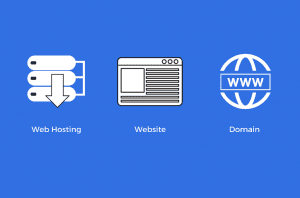Modern companies rely on digital technology for several things to operate at their best. It can be by reaching out to more people, presenting products or services effectively, or allowing for greater customer interaction. One of the most common is by having a website. When you are running an online business, every second counts, regardless of what time of the day it is. However, while it would be lovely if your website was always up and running well, this isn’t always the case. There are situations when a website can go down. You can begin losing money.
If you’ve ever experienced website downtime, then you first-hand know just what a headache it can create. Apart from damaged reputation, it can also affect your bottom line by preventing buyers from making purchases through your website or reducing your ad revenue for the part of the time your website is down. While there may be no way to 100% cut the possibility of website downtime, there are some steps that you can take to reduce your chances of experiencing this unfortunate situation. Here are 7 tips for minimizing your website downtime.
1. Audit the server routinely
Undertaking routine server audits is a good way to decrease server downtime perils by recognizing possible gaps in server security and addressing them instantly. When was the last time you audited your server or had a trusted professional do it for you? If it’s been more than a month or two, this is something you must keep on your priority list.
2. Keep the system clean
A website becomes cluttered with unused coding, old caches, and temporary files. The longer it remains up and running, the more cluttered and disrupted it becomes. This clutter eventually chokes the system and may even cause it to crash. Take action beforehand so that things don’t get difficult in the end. Take out periodic audits of your hosting platform and clear out any unused files, videos or images, or anything that is not required. This will keep your website in the pink of health and decrease downtime.
3. Begin with the right web hosting company
Start by making sure that you not only have the right dedicated server, but also an ideal hosting company as well. Ultimately, your website is only as reliable as your server, and your server is only as reliable as its host. Mainly, you’ll want to search for a hosting company that can make assurances to you such as a service level uptime agreement for extra peace of mind and safety against downtime.
4. Make use of a monitoring plug-in
You might not be aware of how often your website goes down. Nearly all websites experience downtime, but if it occurs frequently, especially at peak sale times, you stand a chance to lose a huge percentage of your customer revenue. An uptime monitoring plugin will do exactly what the name suggests, i.e., keep a record of the amount of time your website is working effectively. You will get automatic reports and email notifications when your website goes down. This kind of plugin easily diagnoses the problem so that you can get it fixed on time.
5. Undertake extra security measures
Unfortunately, data breaches and hacks can be dangerous for your website, so extra security measures must be taken to cut back on downtime risks. For instance, make sure that all users with access to your server login information are informed not to sign in using an untrusted network, such as a public Wi-Fi network. Instead, logins must be made on trusted and secure networks only.
6. Use a Content Delivery Network (CDN)
If your hosting server goes down, your website goes down with it too. A CDN secures you against such an eventuality with redundancy. It creates many copies of your data and stores it across a global network of secure servers. This is undertaken to fasten up page loads at the user’s end. But if your server goes down, the CDN serves data from one of the others, thus minimizing downtime.
7. Schedule regular back-ups
If your website experiences downtime due to a security breach, being able to access the most recently saved versions of all your files could save you from losing everything and benefit you in getting your website back up and running as soon as possible. Scheduling daily server backups is the ideal way to be able to access your data even in the event of a security breach, so make sure that you do this as frequently as possible.
Server downtime is an extremely expensive affair, but it can be reduced with the right practices. A proactive approach to security is key to stay ahead in the game and helps to ensure your website isn’t vulnerable to performance issues and ultimately downtime. Never wait until your website is suffering an outage. Be prepared and put in the measures to prevent it from happening in the first place.
Connect with SPARK Services today if your website needs downtime repair or to get any more information related to website downtimes!




